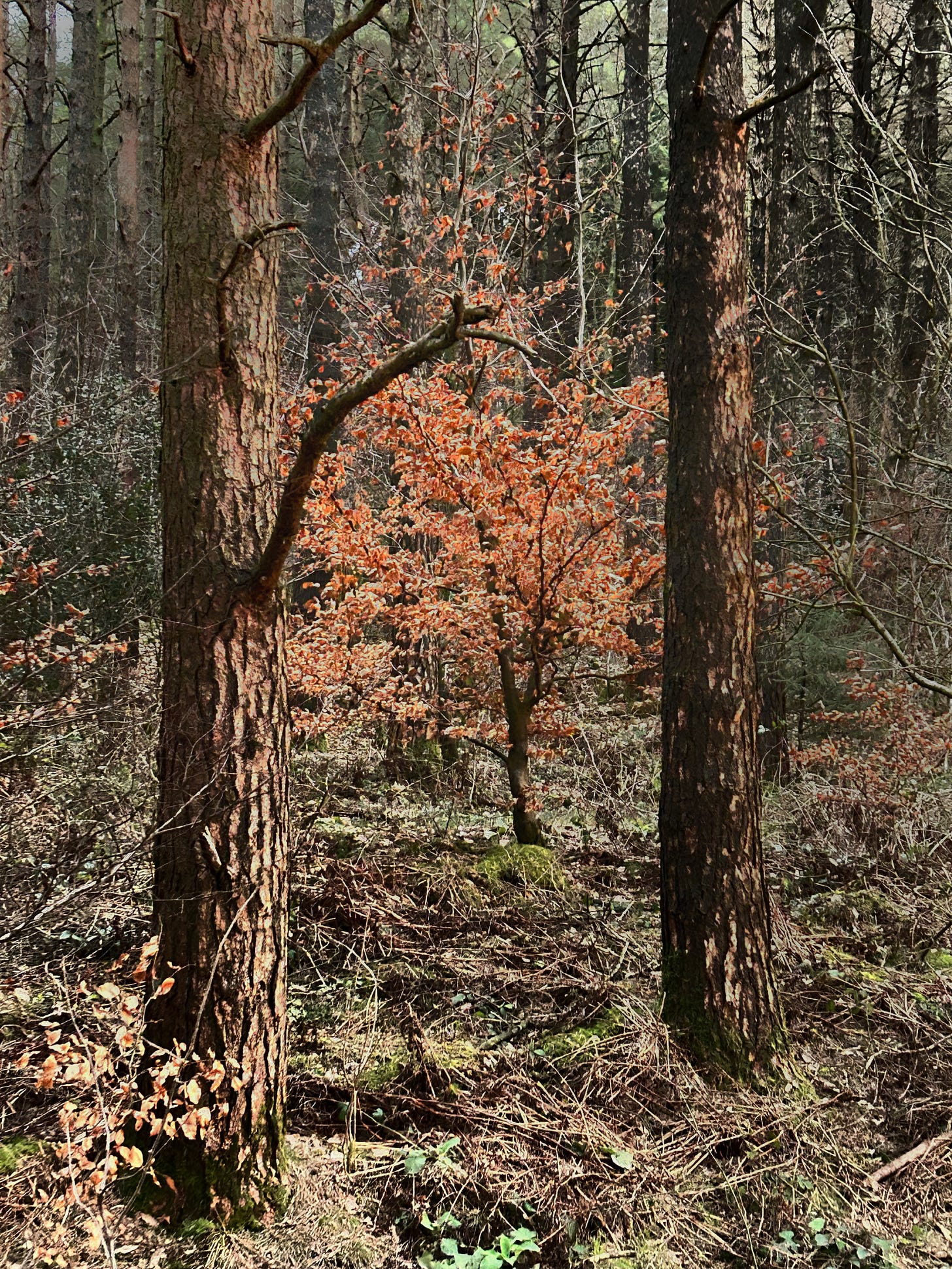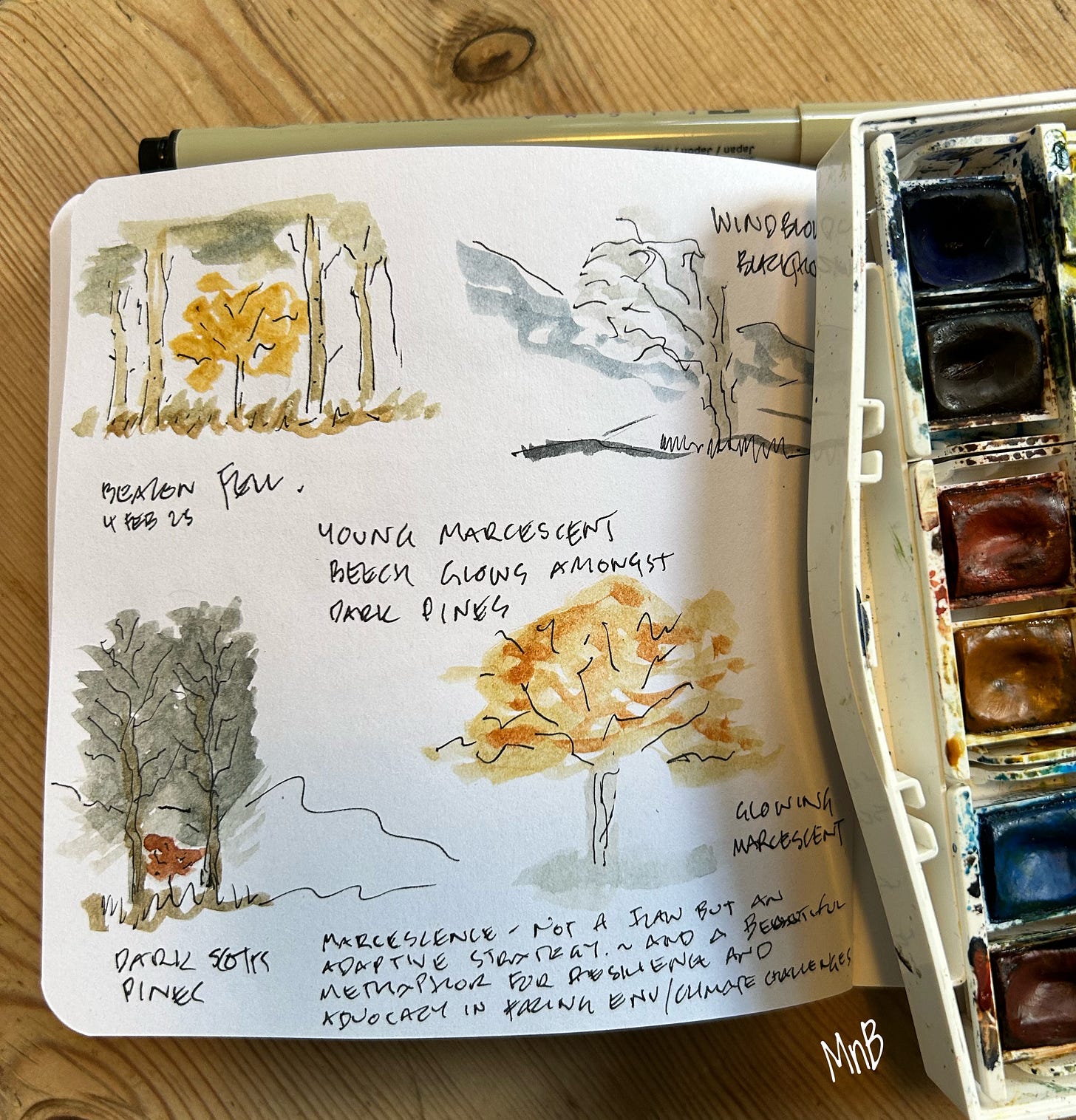Nature as Teacher: Marcescence:
Young, glowing marcescent Beech trees inspire regenerative and resilience thinking
Walking daily, on, around and over Beacon Fell here in the Forest of Bowland at this time of year, I am continuously delighted and inspired by the glowing marcescence of young beech trees.

Marcescence is the botanical term for deciduous trees holding onto their dead leaves through winter instead of dropping them in autumn. It's most commonly seen in young oak and beech trees, where brown leaves stubbornly cling to branches even as winter wraps around them.
This isn't a flaw or failure - it's an adaptive strategy.
Stubborn leaves endure, Silent strength through winter’s grasp, Fresh buds now waiting .
The glowing marcescence of beech trees is a powerful metaphor for the transitional cusp between the old and new, the decaying and the regenerative. It represents a moment of patience, resilience, and quiet beauty amidst uncertainty—whether in self, leadership, or organisation growth. The imagery of marcescence provides insight into how we hold on and wait, and how we advocate for and allow transformation to unfold—slowly but surely—while still shining in the interim.
Like the marcescent and persistent leaves, it is vital to hold onto our commitment to addressing climate change and biodiversity loss even through difficult seasons.
The timing of marcescent leaves' release also resonnates well with strategic patience. Just as the tree waits for the optimal moment to drop its leaves, effective environmental work requires understanding when to preserve resources and when to mobilise them.
Most powerfully, failed environmental initiatives, setbacks in policy, or apparent losses can still protect and nurture future progress in ways we might not immediately recognise.
Even withered dreams can feed new growth.
Regenerative thinking enables us to ask better questions that ensure our organisations, buildings, products and lifestyles co-evolve and thrive as part of nature rather than apart from nature. It promotes connected rather than siloed approaches and importantly enables us to focus on potential and not just on problems. Martin Brown. Regenerative Playbook
Interestingly young trees show marcescence more commonly than mature ones - perhaps reflecting how emerging movements and young activists often need to be more protective of their resources and resilient in the face of challenges than established institutions.
Recommended further reading: the brilliant blog post from Nina Munteanu: When a beech tree lights the world - a tree study”
Zoom Regenerative 70
Delighted that our Zoom Regenerative 'soul centric' series contiunues with Scott McAulay. Scott will be sharing some of the interwoven stories and un/learning processes that led to his own personal form of regenerative practice, and the philosophy that underpins his prolific activities and regenerative activism.
From Scott's bio ... Compassion and care shape the work that I do during today’s cascading climate crisis, and that work reimagines what it means to practice architecture in service of a Just Transition, whilst challenging inertia in academia and industry. I am Architype’s first Regenerative Design & Infrastructures Specialist - a role co-created with great care & intention and I am the catalyst behind the Anthropocene Architecture School - a prefigurative educational infrastructure I have stewarded for 5 years.
Join us on the 18th February for inspiring regenerative conversations




